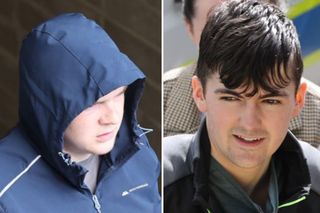Wexford Festival Opera, Silent Night, National Opera House
Silent Night at the National Opera House
The last in this year's Wexford trilogy brings a remarkable piece of music theatre to the National Opera House, with the first European performance of Silent Night.
Premiered in St Paul, Minnesota, three years ago, the collaboration of librettist Mark Campbell and composer Kevin Puts presents a work, based on historical fact, that involves its audience in pondering the devastating effects of 'man's inhumanity to man'.
In two moderately concise acts taking place on a Belgian battlefield, a short prologue set in a Berlin opera house, a Scottish church and a Paris apartment in August 1914 introduces the main characters.
By Christmas Eve their lives have been shattered by World War I. However, a brief cessation in hostilities allows a gesture of fraternal bonding. Act I opens in barbaric combat, superbly choreographed by Wexford's production and lighting team, under director Tomer Zvulun, to match Puts' realistic music.
Erhard Rom's ingenious three-tier design serves German, French and Scottish base camps, where Campbell's text, derived from the screenplay for Joyeux Noel, unveils the poignant innermost feelings of rank and file before moving to Silent Night's temporary armistice centrepiece of brotherly embrace.
Act II sees the effects of this 'treasonable' camaraderie and the separate dispatch of the involved platoons to more deadly confrontational theatres. Puts' score traverses considerable ground between dramatic density and diaphanous delicacy.
His music calls on a number of influences, with John Adams and Benjamin Britten to the fore. But this does not detract from Puts' creation of a moving theatrical experience.
Wexford's mostly male cast and chorus splendidly serve composer and librettist, with Puts' music resting on the voices with relative ease and delivered with excellent diction.
While it may seem invidious to single out Philip Horst, Gavan Ring and Matthew Worth, their pivotal lieutenant roles place them in signal positions. The principal female figure finds Sinead Mulhern as soprano Anna Sorensen incongruously following her tenor beloved to the front.
Conductor Michael Christie ensures the disparate ensemble retains positive balance, in often difficult musical and thought- provoking, circumstances.
Join the Irish Independent WhatsApp channel
Stay up to date with all the latest news














